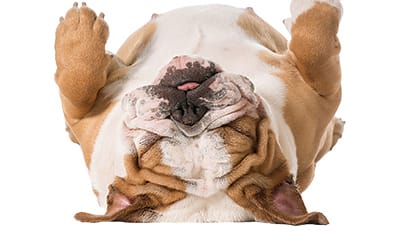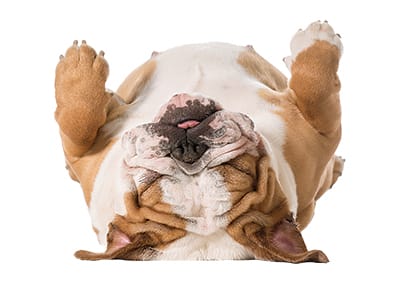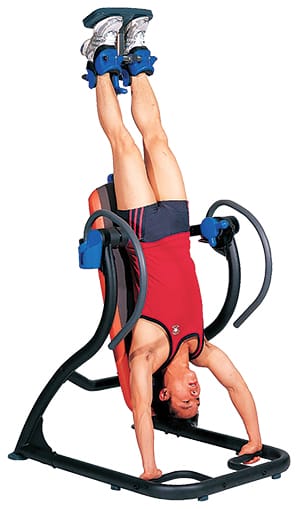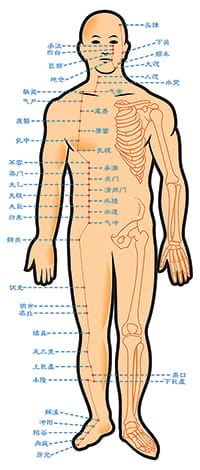Rest and Recovery

When the term “R & R” is used it usually means “rest and relaxation,” but you’re a jiu-jitsu practitioner, so chances are you’re juggling a career, training, strength and conditioning, drilling, competing, researching the latest and greatest moves from Jiu-Jitsu Magazine or a relationship, a family, etc. If that’s the scenario, plus you’re determined to win every tournament you compete in, then you probably don’t even know what R&R is. While this means you’re getting a ton of training in, which is good for improvement, it can also work against you. You could be breaking your body down at a fast rate, which may cause you to be more susceptible to injuries, poor performance, loss of motivation and other issues. The ultimate goal should be to find balance and harmony in your life, on and off the mats. We’re going to take a look at methods you can implement into your training to keep you injury-free on the mats to ensure that your body is recovering as best it can while you’re still training hard.
Put It On Ice
Who doesn’t want to prevent the possibility of injuries happening, or at least better remedy the existing one? Administering cold temperatures at lower levels to portions of the body for therapeutic purposes is known as cryotherapy (aka cold therapy). The Greeks came up with the name as “cryo” means cold and “therapy” means cure. For athletic purposes, when applying one of the various methods, inflammation, spasms and pain are decreased.
“The Real” Ice Bucket Challenge
If you’re looking to ease some of those bumps and bruises and have some time, an ice bath may be the way to go. This can be done in a tub or even a trash can (only brand new and clean we hope) with water and a lot of ice. Once the contents are inside, an individual gets in and submerges his or her body for 10-20 minutes. It’s recommended that the person going in wear rubberized booties and rubber briefs to protect the toes and warm his or her midsection. While this has been a traditional form of treatment, there’s relatively little to no scientific evidence that suggests it works, but on the flip side there’s little to none that says it doesn’t work.

Do WBC, not WWE
WBC (Whole Body Cryotherapy) is the next big thing happening in terms of recuperating for better athletic performance and the highest level of athletes are now utilizing this treatment in droves. Japan initially started the use of WBC in 1978, and along with Europe, has been using this treatment for some time now. It’s an alternative method of cryotherapy where a patient wearing a bathing suit (and sometimes socks, gloves, mouth and ear protection to protect from frostbite) stands in a cryogenic chamber for a few minutes instead of cold-water immersions or uses ice packs to relieve pain and reduce inflammation. Once the individual is inside the chamber the operator releases liquid nitrogen, cooling it to a temperature of around −120 °C/−184 °F (and in some cases even cooler) causing skin temperature to drop in the range of 5-12 °C/41-54 °F; however, core body temperature doesn’t change. During the therapy one’s body releases endorphins causing immediate pain relief and inflammation reduction. Typical treatment time is only 3 minutes within the chamber. Though it’s brief, it’s said to be the equivalent of ice swimming and science backs this as being a very effective treatment method.

R.I.C.E.
R.I.C.E. is a short abbreviation for “Rest, Ice, Compression, Elevation” and is often the typical response for an injury where soft muscle tissues are involved, such as a sprain or strain. R.I.C.E. however, can be performed any time to help alleviate symptoms of underlying trauma and prevent a future injury from happening or help to make it better. Rest ensures that your body can repair itself, so without it the body cannot heal. Considering that we’re all practicing jiu-jitsu (I’m guessing and hoping), we typically roll session after session and put constant strain on our bodies that leave our muscles worn down even though we may not physically see it. While working hard is important, if we’re constantly working too much we will ultimately break our bodies down to the point that the strain leads to inflammation, pain, or worse. Sure, you may have to chill out on something in particular for a week, but in the words of American judoka AnnMaria De Mars, “You can always be doing something else. Do something.” Placing ice on or submerging a body part(s) within ice reduces inflammation and helps numb pain (to an extent). Performing either one of these for 15 to 20 minutes with a break of the same time allotment before reapplying or submerging again is considered the best method. For compression, using an elastic bandage as a wrap, compression sleeves or stockings to manage swelling due to fluids from inflammation can help your body in terms of reducing pain, improved blood flow and better functionality of the area. Any of these should deemphasize free movement, but expand some so that blood is flowing through the treated area. Elevating the area will also aid in the reduction of swelling and works hand in hand with compression to do so.
Sleep On It
Speaking of rest, make sure you get some ZZZ’s. Believe it or not, getting a good night’s sleep can actually lower your risk of injury, reduce pain, improve your health, put you in a better mood, help you control your weight, allow you to think clearer, and improve your memory. When you’re tired you’re more likely to pay less attention, which could cause you to be clumsy and less coordinated, so your risk of injury can go up. As you sleep, you allow a nagging, existing injury time to heal. Furthermore, a good night’s sleep can aid you in better remembering those drills and techniques you learn in class. This may sound like common sense, but why then is sleep so ignored by people? Don’t sleep on that thought.

Watch Your Back
Low back pain is one of, if not the most complained about disorder. If you want to get technical, low back pain is #2 on the list of most common neurological ailments in the U.S. This happens to all of us simply due to aging, amongst the many other causes. As jiu-jitsu practitioners we’ve got to remember that we’re either putting ourselves into or getting put into all types of awkward positions that directly compromise our back health. So, what are we to do? Here are a few suggestions:
Go Inverted!
No, I don’t mean do your infamous inverted spinning guard to lasso to inverted omoplata with a twist move that you’re known for at the gym; I’m speaking of inversion therapy. This is a therapy that is used when the practitioner hangs him or herself upside down or at an angle through the use of an inversion table, gravity boots, or by some other means. Doing so creates a similar feeling to that of spinal traction (stretching of the spine), which is used in doctor and chiropractic offices. However, instead of lying on your back and having a machine pull at you, suspending your body weight allows gravity to decompress your joints from the toes down. When you normally stand straight up with your arms to your sides you are in a position of joint alignment. As each day passes, gravity pulls on your body, so using inversion therapy places the joints equally in the opposite manner helping everything realign.

Side Note/Personal Experience: I purchased an inversion table a couple years back when I suffered an extreme amount of back pain that put me out for 2 months. When I started I could only remain upside down for 30 seconds, but now I can do so for 10 minutes straight and feel great after each time. The key is being consistent and hanging as soon as you wake up and right before you go to bed every day. Each week I increased the amount of time I hung upside down, by at least a minute. In my opinion, inversion works.
I Heard A Pop
In jiu-jitsu, it’s all too often that we’re on our backs, pretzeling our bodies to pull off some maneuver, or someone is pretzeling us. All of these moves place a strain on our backs. An alternative form of medicine to aid recovery and has great emphasis on the care of our backs (and necks) is chiropractic treatment. While it may not be your arm or ankle popping in a tournament, you’re likely to definitely get that sensation in your back or neck if you choose to do a chiropractic session. Ironically, it feels good, though and you feel much better afterwards (at least that’s been my experience). The philosophy behind chiropractic treatment is that an individual’s nervous system is impaired by body mechanic disorders of the musculoskeletal system, so it diagnoses and treats these as a practice of prevention. Manual manipulation of the spine, along with the manipulation of muscles through kneading, joint mobilization, joint manipulation, exercises, as well as counseling, are typically used for treatment.

Eastern Philosophies Brought West
Contrary to what you might think, acupuncture isn’t just the insertion of needles into one’s skin. Acupressure and cupping are also traditional forms of this treatment method and traditional Chinese medicine. The exact definition of acupuncture is a system of medicine that involves penetrating the skin or tissues with needles, or the application of pressure, heat, or a laser light with the intent to alleviate pain and treat a variety of physical conditions. Practitioners of traditional Chinese medicine believe that the meridian system is a path through which “chi” (life energy) flows through our bodies and can be altered by manipulations used in acupuncture. Some people stand by these methods of treatments; however, scientists argue that there is not enough evidence to verify positive results and believe a placebo effect of each individual patient rationalizes this through their own philosophies.
On Pins & Needles
Through the use of needles, the goal is to produce De-qi (qi is referred to as “chi” in America) or the “arrival of qi” according to Chinese acupuncturists. This is a sensation of numbness, distension, or tingling in the area of needling. Here in the states, however, it’s not necessarily considered a part of treatment (dependent upon the practitioner) and the major focus is to release built up pain within the body and bring it to a relaxed state. Generally, stainless steel is the material used for needles as they don’t rust or break, but are flexible. After using a skin disinfectant (such as alcohol), a practitioner uses a plastic guided tube to quickly insert 5 to 20 needles (based upon problem symptoms) into the patient’s skin. Depending on how precise the skill level of the acupuncturist is will determine if the patient has some, little, or no pain. Once the needles are in, the tissue then may be spun, flicked, or moved up or down accordingly to provide the best relief and will remain in the area for 10 to 20 minutes.

A Different Kind Of Pressure
Using the same concepts of needle-based acupuncture, but without the invasive needle sticking, is acupressure. Pressure is physically applied with one’s hand, elbow, or an instrument (I instantly thought of a foam roller) to certain points of the body in order to clear blockage within the body, thus providing pain relief. It’s claimed to help manage lower back pain, tension headaches and stomach issues, such as aches, nausea, and vomiting. Acupressure also falls under massage as well.

Wear A Cup
Not the kind that will get you DQ’d in a tournament. Underneath the branch of acupuncture is cupping therapy. Often referred to as cupping, this therapy is when suction of skin is created to mobilize blood flow (to the treated areas), draw out toxins, treat deep scar and connective tissue in muscles, alleviate knots in muscles, reduce swelling, and promote healing. These are just some of the many benefits that avid practitioner’s claim. The process involves soaking cotton balls with alcohol that are lit on fire and placed inside each cup in order to heat it, thus removing oxygen, which causes the sucking or vacuum like action. As this is performed, the practitioner turns it upside-down and the lack of oxygen latches the cup onto the skin where they will remain from 5 to 15 minutes. This is known as “dry” cupping. There is also another type known as “wet” or “air” cupping.

Heat Things Up
Though it’s the opposite of cryotherapy, thermotherapy is the application of heat used for the same purposes, such as assisting recovery, reducing inflammation, and relieving pain. Differences include an increase of extensibility within tissues and a decrease in joint stiffness. In contrast to cryotherapy, in which the blood vessels are constricted, they become dilated causing blood circulation to increase as body temperature rises. Thanks to this increase the natural healing process of your body speeds up to soothe those aches and pains by providing nutrients and oxygen more rapidly. There are various forms, including the use of a heating pad among others.
Throwing Salt In The Game
If you don’t have access to a sauna you can do something similar (but not to the same extent) by drawing yourself a hot bath, adding two cups of Epsom salt and soaking in it for 10 to 20 minutes. The same effects take place, but not as intensely. To make it hotter many competitors in jiu-jitsu, wrestling, boxing, and MMA add more Epsom salt, bottles of rubbing alcohol, smear their bodies with Albolene cream, and soak for 20-30 minutes; getting in and out at times. This produces an intense amount of heat and is known for being used while cutting weight. It’s a method that requires extreme caution and should be performed only when someone else is there to assist.

Think Inside The Box
Maybe not what you want to hear, right? Well, a sauna is a small room that can produce an immense amount of heat in a localized area. Air is warmed through a heater (like in your home, but hotter) in a conventional sauna or in an infrared sauna that uses objects to heat materials that in turn increase air temperature. Results generated by these methods relax your aching muscles by reducing the tension within them, eliminating lactic acid and other toxins, and ridding you of those pains within your joints.
Rub One Out
Get your mind out of the gutter and if it wasn’t there, good for you! By manipulating layers of muscle and connective tissue through a variety of techniques, one can enhance the body’s functions, heal faster and relax the muscles. This method is massage therapy and like stretching, it can increase blood flow, as well as help aching muscles recover by flushing out waste. Through the use of all the parts of one’s arms (excluding the biceps and triceps), feet or a device, massage is expressed by pressure being applied onto the body. There are a variety of types, such as acupressure, which we went over earlier. This type, along with myofascial release, reflexology, shiatsu, sports massage, and deep tissue are probably the most well known; however, there are many other types of massage as well. While all forms will probably help in terms of recovery, you probably should focus on sports massage (you are involved in jiu-jitsu after all) or myofascial release. Sports massage primarily focuses on the manipulation of muscles through kneading, joint mobilization and joint manipulation (Sound familiar?). Myofascial release is a manual massage technique that stretches muscle fascia that releases bonds between it and muscles in order to eliminate pain. It also increases ROM and improves balance. This is performed by compression or tension being applied in different directions and skin rolling. Use of a foam roller is a good example of this.
Stretch!!!
Stretching AFTER (not before) a workout helps sore muscles recover by flushing out waste products, leaving you less sore than you would have been without stretching. It also improves flexibility, ROM (range of motion), and leaves you less susceptible to future injuries due to your muscles loosening up. The overall result is that your body will feel relaxed and your muscle control will improve. This allows your body to be pliable in terms of meeting the demands of your sparring, competitions, or conditioning sessions. If your muscles can only stretch so far, the likelihood of a tear during an explosive moment increases greatly. Like most things, there are various types of stretches. The ballistic method stretches muscles to their max by actually moving the body part in a rapid, bouncing motion. Another movement stretch is dynamic stretching; however these stretches are extremely controlled and performed slowly through a full ROM in order to reduce the chance of injury. PNF (proprioceptive neuromuscular facilitation) involves applying resistance to the muscle, allowing it to then relax, re-applying the resistance, but stretching the muscle a little further, relaxing, and then once again stretching it even further than the last time. Typically, a partner assists the individual when using PNF. This method works very quickly in terms of providing all the above mentioned benefits if done continuously. The most common type of stretching is static stretching where the muscle is stretched for a set amount of time until tension is felt, then holding the pose (without any movement) either 2 sets of 30 seconds or 3 sets of 20 seconds per each stretch. The key to any of the forms of stretching is being consistent and doing so each day.
Conclusion
As you can see there are a slew of practices that are at your disposal in order to improve your recovery for that next workout, tough rolling session, or for an upcoming tournament. We recommend that you do your own research, consult a physician prior, as well as speak to those you may have an interest in receiving treatment from beforehand. You’ll have to do some searching around in regards to scheduling, pricing and experience level if being treated by a contractor or service, but in the end it will probably be more than worth it. Good luck and stay healthy my friends!
